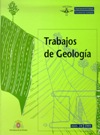Abstract
The pre-romanesque fountain of Foncalda (Oviedo, Spain), made of ashlar stone, shows a remarcable lost of joints mortars which leads to its structural unstability. There are several types of mortars, but only one has been checked to be well preserved. The objectiv of this paper is characterizing all these mortars, triying to separate that considered original from the ones replaced and stablish proper formulation and proportions for a new restoration one. Results define the petrography of the best preserved mortar at the fountain – a hydraulic lime one- considered to be the original mortar, therefore recomending a similar one for restoration.Downloads
Download data is not yet available.

